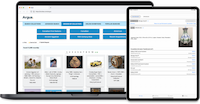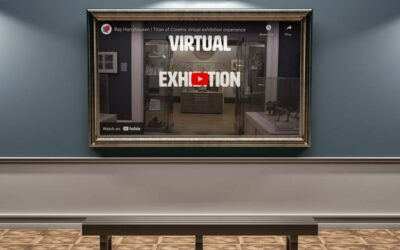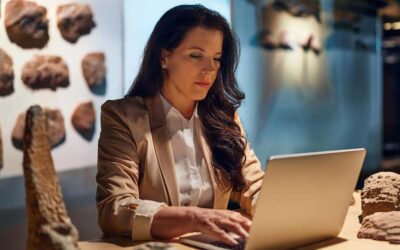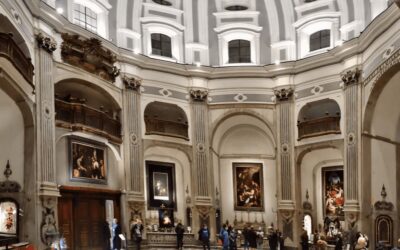How to Identify Potential Museum CMS Projects for Funding

Rachael Cristine Woody
Providing access to museum collections—and all the work required in order to facilitate access—can be a time-intensive and expensive endeavor.
Present-day museum Collections Management Systems (CMS) have evolved to the point where many elements of our job as collection stewards are easier. However, in order to have a strong CMS tool, there must be comprehensive object records. In other words, we still need to gather and create the data to go with each item when it’s cataloged in the CMS. This takes time and expertise, two resource items that are stretched thin at many institutions. In addition to supporting collections care and management, the CMS is a major engine for providing collections access to the external community. Therefore, it’s no surprise we’re seeing an increase in the number of grants that will now cover museum CMS work with access as the goal.
Where to Begin?
As this is a newer area in grant application work, it can be difficult to conceptualize how daily work with a CMS could be temporarily supported via a grant award. There’s an important distinction here: What work in the CMS can be carved out and thought of as a discrete project? This approach is the opposite of asking funders to pay toward daily operational costs—something many granting agencies and foundations frown upon.
The following aids will help you to identify CMS projects that are suitable and attractive for funding:
- Give the People What They Want
- A Wow Factor
- The Perpetual To-Do List
- Requires Tremendous Resources
Give the People What They Want
A simple place to begin is reviewing past records of items requests, research appointments, and other demand-driven data to help identify items your stakeholders want. High use and high demand items can be leveraged to the max by ensuring they have robust object records in the CMS. Robust meaning each record has enhanced detail, tags, related items, etc.
A Wow Factor
Next up are the projects that could provide a “wow factor”. Once the data is solid in the CMS, it can be further leveraged for additional outputs such as a digital exhibit, educational curriculum, a research symposium, a feature in museum communications and outreach, etc. While data enhancement can seem dull, it’s absolutely required in order to meet user expectations with these (perhaps more exciting) “products”. To kick start your creativity think of ways you can encourage the user discovery process, how you can better deliver assets, or how you can improve upon how users engage with the online CMS material.
The Perpetual To-Do List
While fulfilling an item on your to-do list may seem mundane, it’s the beneficial impact on your capacity and the improvement in collections access that makes it compelling. There never seems to be enough time in the day to achieve everything on the to-do list, so carving out an item that you just never get to can be framed as a temporary aid in capacity while also improving collections care, management, and access.
Requires Tremendous Resources
Finally, there’s the consideration of projects that aren’t possible without access to better tools and personnel. These are often high-priced projects that require a cash infusion to acquire advanced digitization technology, implementing a new CMS or Digital Asset Management System (DAMS), or personnel to help with a heavy lift of intensive data creation or remediation.
Conclusion
On its surface, a museum CMS project can seem boring. And when we perceive things as boring, it can be difficult to hype them up to the level required when asking for money. If you’re not excited about it, then neither are the funders. When thinking through your strategy, acknowledge the expected work to be done, but be sure to speak equally about how it meets demand, offers a wow factor, makes your job easier, or requires a one-time investment to achieve what would otherwise be impossible.
Additional Grant Funding Resources
- A Survivor’s Guide to Museum Grant Writing: https://lucidea.com/grant-writing-ebook/
- Webinar Suite: https://lucidea.com/project_category/rachael-woody-webinars/
- Lucidea Grants Directory: https://lucidea.com/grants-directory/
- Lucidea Grants Workbook & Templates: https://lucidea.com/grants-directory/grants-workbook-and-templates/
Additional Reading

Rachael Cristine Woody
Energized by this post? Please join us for the companion webinar How to Construct Museum CMS Projects that Attract Funding, August 28, 2024 at 11 a.m. Pacific, 2 p.m. Eastern. (Can’t make it? Register anyway and we will send you a link to the recording and slides afterwards). Register now.
**Disclaimer: Any in-line promotional text does not imply Lucidea product endorsement by the author of this post.
Never miss another post. Subscribe today!
Similar Posts
Examining the National Galleries of Scotland’s Harryhausen Digital Exhibit
In October 2020, the National Galleries Scotland (NGS), Ray Harryhausen | Titan of Cinema (October 2020 – February 2022) exhibition was meant to open and celebrate what would have been Harryhausen’s centenary year. Due to COVID the physical exhibit was forced to close...
Translating Physical Museum Exhibits to the Digital Realm
Exhibit design has long been a cornerstone of storytelling, crafting immersive, sensory-rich experiences within museum walls. But when the story moves beyond the physical space, how can the principles of exhibit design thrive in a digital realm?
Museum Exhibit Design as Storytelling Infrastructure
Exhibit design provides the infrastructure needed in order for stories to materialize. Before we consider how to translate the story told through physical exhibition to digital, it is important to understand how the physical aspects of the design support the story as...
Museum Forecast 2025: The Words We Use
This is the sixth year of our forecasts for the museum field! An incredible amount of change has occurred in the sector which brings with it new challenges and opportunities.





Leave a Comment
Comments are reviewed and must adhere to our comments policy.
0 Comments